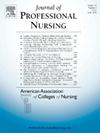Competency-based education for teaching the concept of communication
IF 2.9
3区 医学
Q1 NURSING
引用次数: 0
Abstract
Background
Although AACN standards recognize communication as vital for establishing nurse competency, formal educational materials and direction for teaching and assessing communication are lacking.
Purpose
This article explores current implementation efforts and the development and preliminary testing of a competency-based framework for communication.
Methods
A three-step process was conducted: (a) a national survey of nursing programs on communication implementation; (b) development of competency-based communication learning objectives; and (c) a scaffolded learning approach to teaching communication competency.
Results
Moderate levels of implementation of communication content within BSN programs were reported (mean 7.86 out of 10), with implementation highest in course content on Chronic Disease and lowest in Hospice and Palliative Care. A total of 56 communication learning objectives were evaluated by AACN workgroup members. Out of the learning objectives, 12 scored less than 3.5 out of 5 and were removed, resulting in a finalized list of 44 learning objectives. Seventy-six nursing students participated in a scaffolded learning approach that included an online communication module designed to teach three of the learning objectives. Significant student improvements in communication knowledge and ability to be present were found, as well as satisfaction with the online module. There were no significant changes in the level of comfort with communication. Communication competency post-module was assessed by raters, showing variance among students.
Conclusions
This article presents the first theoretically-grounded and systematic approach for competency-based education for teaching communication.
以能力为本的教育,教导沟通的概念
尽管AACN标准承认沟通对建立护士能力至关重要,但缺乏正式的教育材料和教学和评估沟通的指导。本文探讨了当前的实施工作,以及基于能力的沟通框架的开发和初步测试。方法采用三步法:(a)全国护理沟通实施情况调查;(b)制定基于能力的交际学习目标;(c)用架式学习方法来教授沟通能力。结果BSN课程中沟通内容的实施程度中等(平均7.86 / 10),慢性病课程内容的实施程度最高,临终关怀和姑息治疗课程内容的实施程度最低。AACN工作组成员共评估了56个沟通学习目标。在5个学习目标中,有12个得分低于3.5分,因此被删除,最终形成了44个学习目标的清单。76名护理专业的学生参加了一个脚手架式的学习方法,其中包括一个旨在教授三个学习目标的在线交流模块。我们发现学生在沟通知识和出席能力方面有了显著的提高,对在线模块的满意度也有了显著的提高。在沟通的舒适程度上没有明显的变化。沟通能力后模块由评分者评估,呈现出学生间的差异。本文提出了第一个基于理论的、系统的交际教学能力教育方法。
本文章由计算机程序翻译,如有差异,请以英文原文为准。
求助全文
约1分钟内获得全文
求助全文
来源期刊
CiteScore
4.80
自引率
8.00%
发文量
153
审稿时长
52 days
期刊介绍:
The Journal will accept articles that focus on baccalaureate and higher degree nursing education, educational research, policy related to education, and education and practice partnerships. Reports of original work, research, reviews, insightful descriptions, and policy papers focusing on baccalaureate and graduate nursing education will be published.

 求助内容:
求助内容: 应助结果提醒方式:
应助结果提醒方式:


